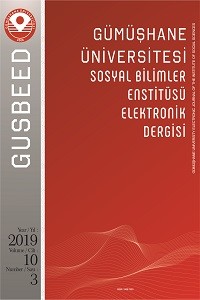Abstract
This study
analyzes consumption pattern of three aggregated food categories for households
in China. Grain, meat products and aquatic products are chosen to understand
consumption pattern in Jiangsu and Guangdong provinces in China. The Linear
Expenditure (LES) and Indirect Translog Demand Systems (ITDS) implemented to
estimate income elasticities, own price elasticities, and cross price
elasticities of these food categories. In addition to that an economic variable
is used in the system to explain impact on household consumption pattern, so
ITDS with and without economic variable are also examined. Analysis results
show that fish have the highest income elasticities among others, while grain
has the lowest income elasticity. According to high own price elasticities of
fish and meat products traders and policy makers should be more circumspect to
maintain profitability.
Keywords
Consumption Patterns Elasticities Linear Expenditure System Indirect Translog Demand System
References
- Chern, W. S. (2000). “Assessment of demand-side factors affecting global food security.” Foodsecurity in Asia: Economicsandpolicies, 83-109. https://www.cabdirect.org/cabdirect/abstract/20013042298
- Chern, S.W., and Liu, E. Kang. (2001). “Impact of Income Changes and Model Specification on Food Demand in Urban Chine”. AAEA annual meeting, Chicago, Illinois. https://core.ac.uk/download/pdf/6522937.pdf
- Christensen, L. R.,Jorgenson, D. W., &Lau, L. J. (1975). “Transcendental logarithmic utility functions.” The American Economic Review, 65(3), 367-383. https://www.jstor.org/stable/pdf/1804840.pdf
- De Zhou, Xiaohua Yu, Thomas Herzfeld, (2015) "Dynamic food demand in urban China", China Agricultural Economic Review, Vol. 7 Issue: 1, pp.27-44. https://doi.org/10.1108/CAER-02-2014-0016
- Holt, M.T. and Goodwin, K.B. (2009). “The almost Ideal and Translog Demand System.” MPRA Paper No.15092. online at http:mpra.ub.uni-muenchen.de/15092/.
- Katchova, L. A and Chern, S.W. (2004.) "Comparison of Quadratic Expenditure System and Almost Ideal Demand System Based on Empirical Data," The International Journal of Applied Economics, Department of General Business, Southeastern Louisiana University, 1(1), 55-64.
- Lee, J. L. and Brown, M.G. (1986.) “Food Expenditure At Home and Away From home in the United States-A switching Regression Analysis.” The Review of Economics and Statistics, 68(1), 142-147. Available at: https://www.jstor.org/stable/pdf/1924937.pdf
- Liu, J., and Savenije, H. H. (2008). “Food consumption patterns and their effect on water requirement in China.” Hydrology and Earth System Sciences Discussions, 12(3), 887-898. Available at: https://hal.archives-ouvertes.fr/hal-00305175/document
- National Bureau of Statistics of China http://www.stats.gov.cn/english/
- Nayga, R. M., and Capps, O, (1992) “Determinants of Food Away From Home Consumption” An update. Agribusiness, Vol. 8, No.6, 549-559. URL:http://web.a.ebscohost.com/ehost/pdfviewer/pdfviewer?vid=0&sid=2752cb09-a460-4a89-8271-3ea352a68eb7%40sessionmgr4008
- Wang, Q. B.,Halbrendt, C., and Johnson, S. (1995). “Household demand for animal products in urban China: Hypothesis tests for demand system selection.” American Journal of AgriculturalEconomics. Vol. 77, No. 5, pp. 1368-1368.
- Zheng, Z.,and Henneberry, S. R. (2009). “An analysis of food demand in China: a case study of urban households in Jiangsu province.” Review of Agricultural Economics, 31(4), 873-893. Available at: https://pdfs.semanticscholar.org/4d26/f321f4790bd5444e217df043e498e2802990.pdf
- Zhou, D., Yu, X., and Herzfeld, T. (2015) “Dynamic food demand in urban China.” China Agricultural Economic Review, 7(1), 27-44. URL: https://www.econstor.eu/bitstream/10419/97023/1/78578490X.pdf
Abstract
Bu çalışma 3
farklı gıda kategorisindeki tüketim modelini analiz etmektedir. Tahıl, et ve
deniz ürünleri, Çin’in Jiangsu ve Guangdong şehirlerindeki hane halkının
tüketim modelini analiz etmek için seçilmiştir. Gelir esnekliği, ürünün kendi
fiyat esnekliği ve çapraz fiyat esneklikleri Doğrusal Harcama (LES) ve Dolaylı
Translog Talep Sistemleri (ITDS) aracılığıyla tahmin edilmiştir. Ayrıca,
çalışmada hane halkının tüketim modellerini belirlemek için analize bir de
ekonomik değişken eklenmiştir. Böylece, ITDS modeli ekonomik değişken eklenerek
ve eklenmeden de analiz edilmiştir. Analiz sonuçlarına göre, gelir esnekliği en
yüksek deniz ürünlerinde iken, en düşük tahıllarda bulunmuştur. Ürünlerin kendi
talebinin fiyat esneklikleri baz alındığında balık ve et ürünleri yüksek
esnekliklere sahiptir. Bu nedenle gerek tüccarlar gerekse politika yapıcılar,
söz konusu ürünlerin gelecekte karlılığı sürdürülebilirliğine dair daha
dikkatli olmalıdırlar.
References
- Chern, W. S. (2000). “Assessment of demand-side factors affecting global food security.” Foodsecurity in Asia: Economicsandpolicies, 83-109. https://www.cabdirect.org/cabdirect/abstract/20013042298
- Chern, S.W., and Liu, E. Kang. (2001). “Impact of Income Changes and Model Specification on Food Demand in Urban Chine”. AAEA annual meeting, Chicago, Illinois. https://core.ac.uk/download/pdf/6522937.pdf
- Christensen, L. R.,Jorgenson, D. W., &Lau, L. J. (1975). “Transcendental logarithmic utility functions.” The American Economic Review, 65(3), 367-383. https://www.jstor.org/stable/pdf/1804840.pdf
- De Zhou, Xiaohua Yu, Thomas Herzfeld, (2015) "Dynamic food demand in urban China", China Agricultural Economic Review, Vol. 7 Issue: 1, pp.27-44. https://doi.org/10.1108/CAER-02-2014-0016
- Holt, M.T. and Goodwin, K.B. (2009). “The almost Ideal and Translog Demand System.” MPRA Paper No.15092. online at http:mpra.ub.uni-muenchen.de/15092/.
- Katchova, L. A and Chern, S.W. (2004.) "Comparison of Quadratic Expenditure System and Almost Ideal Demand System Based on Empirical Data," The International Journal of Applied Economics, Department of General Business, Southeastern Louisiana University, 1(1), 55-64.
- Lee, J. L. and Brown, M.G. (1986.) “Food Expenditure At Home and Away From home in the United States-A switching Regression Analysis.” The Review of Economics and Statistics, 68(1), 142-147. Available at: https://www.jstor.org/stable/pdf/1924937.pdf
- Liu, J., and Savenije, H. H. (2008). “Food consumption patterns and their effect on water requirement in China.” Hydrology and Earth System Sciences Discussions, 12(3), 887-898. Available at: https://hal.archives-ouvertes.fr/hal-00305175/document
- National Bureau of Statistics of China http://www.stats.gov.cn/english/
- Nayga, R. M., and Capps, O, (1992) “Determinants of Food Away From Home Consumption” An update. Agribusiness, Vol. 8, No.6, 549-559. URL:http://web.a.ebscohost.com/ehost/pdfviewer/pdfviewer?vid=0&sid=2752cb09-a460-4a89-8271-3ea352a68eb7%40sessionmgr4008
- Wang, Q. B.,Halbrendt, C., and Johnson, S. (1995). “Household demand for animal products in urban China: Hypothesis tests for demand system selection.” American Journal of AgriculturalEconomics. Vol. 77, No. 5, pp. 1368-1368.
- Zheng, Z.,and Henneberry, S. R. (2009). “An analysis of food demand in China: a case study of urban households in Jiangsu province.” Review of Agricultural Economics, 31(4), 873-893. Available at: https://pdfs.semanticscholar.org/4d26/f321f4790bd5444e217df043e498e2802990.pdf
- Zhou, D., Yu, X., and Herzfeld, T. (2015) “Dynamic food demand in urban China.” China Agricultural Economic Review, 7(1), 27-44. URL: https://www.econstor.eu/bitstream/10419/97023/1/78578490X.pdf
Details
| Primary Language | English |
|---|---|
| Journal Section | Articles |
| Authors | |
| Publication Date | October 23, 2019 |
| Submission Date | December 20, 2018 |
| Published in Issue | Year 2019 Volume: 10 Issue: 3 |



